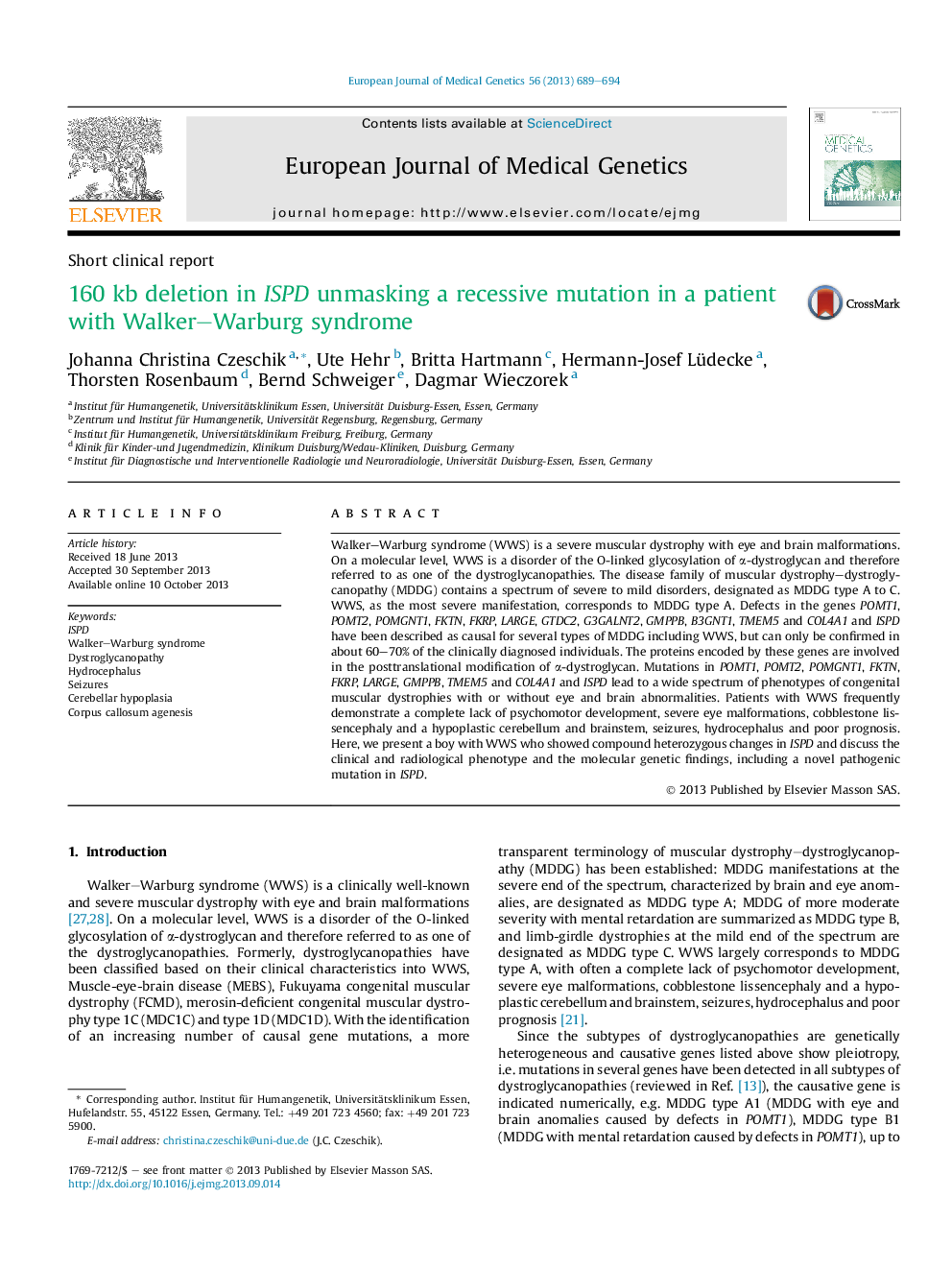| Article ID | Journal | Published Year | Pages | File Type |
|---|---|---|---|---|
| 5904873 | European Journal of Medical Genetics | 2013 | 6 Pages |
Walker-Warburg syndrome (WWS) is a severe muscular dystrophy with eye and brain malformations. On a molecular level, WWS is a disorder of the O-linked glycosylation of α-dystroglycan and therefore referred to as one of the dystroglycanopathies. The disease family of muscular dystrophy-dystroglycanopathy (MDDG) contains a spectrum of severe to mild disorders, designated as MDDG type A to C. WWS, as the most severe manifestation, corresponds to MDDG type A. Defects in the genes POMT1, POMT2, POMGNT1, FKTN, FKRP, LARGE, GTDC2, G3GALNT2, GMPPB, B3GNT1, TMEM5 and COL4A1 and ISPD have been described as causal for several types of MDDG including WWS, but can only be confirmed in about 60-70% of the clinically diagnosed individuals. The proteins encoded by these genes are involved in the posttranslational modification of α-dystroglycan. Mutations in POMT1, POMT2, POMGNT1, FKTN, FKRP, LARGE, GMPPB, TMEM5 and COL4A1 and ISPD lead to a wide spectrum of phenotypes of congenital muscular dystrophies with or without eye and brain abnormalities. Patients with WWS frequently demonstrate a complete lack of psychomotor development, severe eye malformations, cobblestone lissencephaly and a hypoplastic cerebellum and brainstem, seizures, hydrocephalus and poor prognosis. Here, we present a boy with WWS who showed compound heterozygous changes in ISPD and discuss the clinical and radiological phenotype and the molecular genetic findings, including a novel pathogenic mutation in ISPD.
